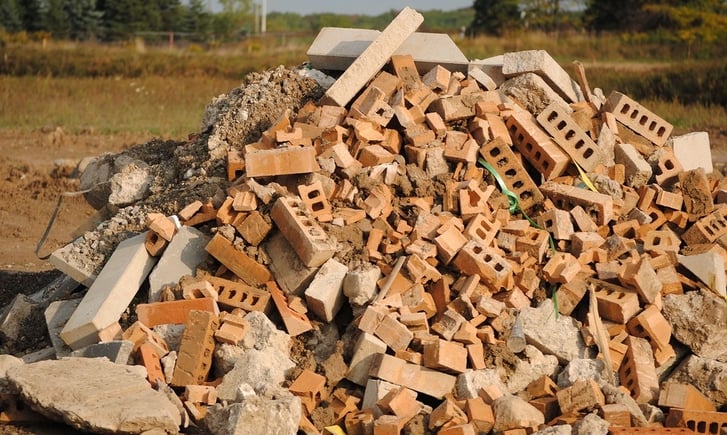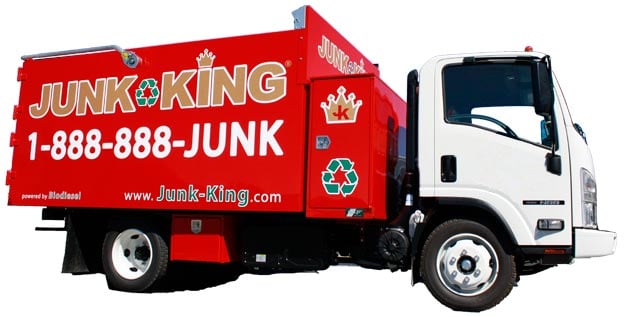
Construction, while it can be a profitable industry, comes with a large number of unique challenges.
In addition to weather, bureaucracy and labor issues, there's finding the most efficient and cost-effective means of dealing with the construction waste and debris that is produced on every job.
While safety is often uppermost in the minds of most general contractors, right before budgets and time frames, there is always, always the matter of cleaning up and hauling off the junk and debris.
What's the Best Way to Manage Construction Waste?
Dealing with construction debris and the task of construction debris removal is one of the increasingly complicated challenges faced in the construction industry. The costs for disposal are rising and state and federal regulation is increasing.
In addition, a company's productive resources are being taken up with the ongoing need to clean and properly dispose of never-ending construction waste. In many areas the landfill space is diminishing rapidly. This means that pursuing alternatives such as reuse and recycling of waste materials is a pressing concern.
Fortunately, the challenge of C&D (construction and demolition) waste actually provides an opportunity for contractors and builders to both benefit financially and contribute positively to the health of the environment.
What's In Your Construction Waste?
C&D waste is often divided into the following categories:
- Waste left over from new construction (i.e. new material scraps, packaging, etc.)
- Remodeling/demolition debris from older buildings (i.e. old wood, insulation, plaster, brick, fixtures, appliances, etc.)
- Debris from large civil works projects such as highways and bridges (i.e. concrete, asphalt, rubble, etc.
How much is actually generated from construction and demolition work varies by how construction debris is defined and what's included. Nonetheless, the overall quantities produced by the construction industry in the U.S. is impressive.
Good construction waste management involves recognizing that much of the waste material is reusable in some form or another. A second consideration with construction waste is that some of it is considered hazardous waste and must be disposed of properly.
Best Practices for Handling and Disposing of C&D Waste
Here is a handy infographic illustrating some of the aspects of construction and demolition waste disposal facts and practices:

Share this Image On Your Site
Every contractor knows that construction projects create large amounts of debris. Not as many are aware how much of the waste material in that debris can be recycled, repurposed or reused in some form or another. Because concrete debris, for example, is so durable and has great potential for reuse, it's a great candidate for recycling.
Many contractors might be surprised to know just how much actual debris and waste is produced on their job sites. Exactly how much waste is typically produced from construction projects? Here is a breakdown of the average types of construction and demolition (C&D) debris:
- 6 % from residential construction
- 3% from non-residential construction
- 11% from residential demolition
- 39% from non-residential demolition
- 22% from residential renovation
- 19% from non-residential renovation
It may not be surprising to contractors that approximately 40% of the C&D waste generated in the U.S. comes from non-residential, that is commercial, demolition projects.
However, it may come as something of a surprise that at least 225 of C&D debris comes from the smaller residential renovation projects. And this is a good thing since much of that construction waste and debris can be recycled.
Junk Hauling from Real Professionals for Your Construction Waste
Construction waste removal and site clean-up might be considered “part of the job” for contractors, bit it really doesn’t have to be. In fact, when you add up every hour your crew spends picking up debris, cleaning the site, and hauling and disposing of the material, it can be quite a bit. And these our hours NOT spent working on your project.
And the bigger the job, the more the lost hours add up.
When you add to that the possible costs of required training for your employees, then the long-term cost benefits of outsourcing the work become more attractive.
Do you have a current or upcoming project that will need construction trash clean-up and removal? If so, call Junk King! Our team specializes in construction trash removal. We can be at your facility in mere minutes, so call us today! Our crew is fully insured and well-trained, so you can trust them to get rid of your unwanted items in a professional and courteous fashion.
And one of the best things about hiring Junk King is that we recycle a much of the material we pick-up. This is proof of our commitment to being an eco-friendly removal service. If you have questions about what we do or what we believe, give us a call at 1-888-888-JUNK (5865)



